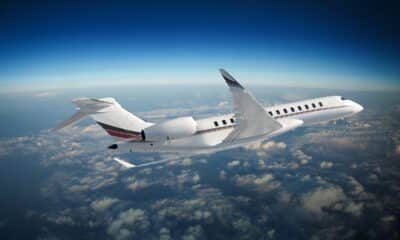Airlines
These are the most Fuel-Efficient airplanes in the World
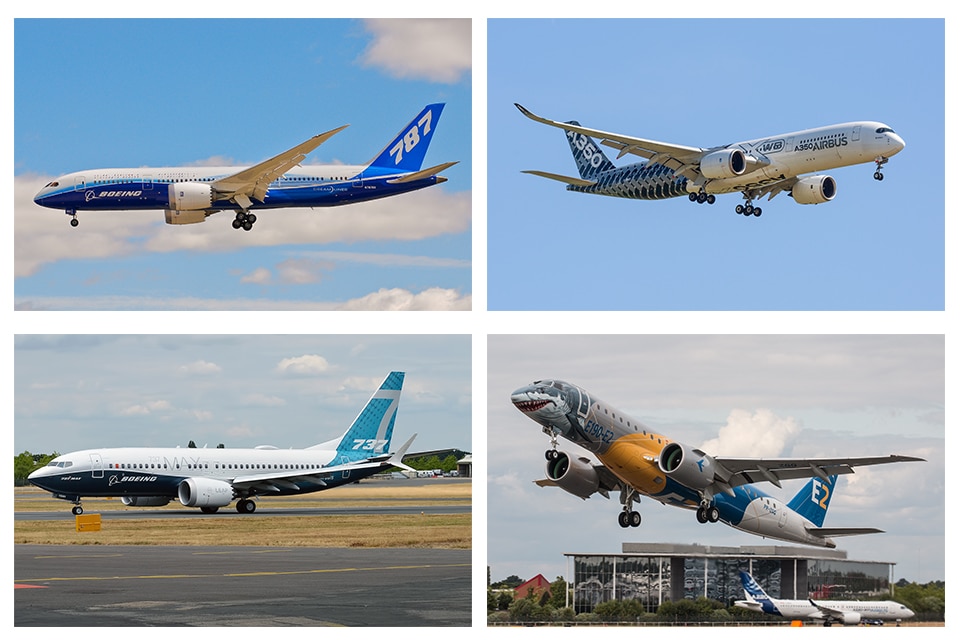
Fuel efficiency is a crucial aspect of the aviation industry, encompassing a wide range of practices and technologies aimed at reducing fuel consumption and minimizing the environmental impact of air travel. With the growing concerns over climate change and the need to reduce greenhouse gas emissions, improving fuel efficiency has become a top priority for airlines worldwide.
Interesting facts about Airbus A350(Opens in a new browser tab)
Fuel efficiency is a major concern for airlines, as fuel prices can account for a large amount of operational expenses. Airlines are continuously looking for ways to cut fuel use and improve the fuel efficiency of their fleets. Here are some top 6 fuel-efficient airlines.
- Boeing 787 Dreamliner: The Boeing 787 is known for its fuel efficiency due to its lightweight composite structure, advanced aerodynamics, and efficient engines. It offers significant fuel savings compared to previous-generation aircraft. Its range can go up to 7,635 nautical miles, and it uses fuel around 20% more effectively.
- Airbus A350 XWB: Another fuel-efficient aircraft is the Airbus A350 XWB (Extra Wide Body). It has enhanced aerodynamics, lightweight materials, and fuel-efficient engines, which result in lower fuel consumption and emissions. This aircraft has an 8,000 nautical mile range and can fly for up to 17 hours without refueling.
- Boeing 737 MAX: The Boeing 737 MAX has significant fuel-efficient improvements over the Boeing 737 NG despite being grounded in 2019–2020 for safety upgrades. These consist of increased winglets, sophisticated aerodynamics, and better engines. Based on this speed and the maximum range, it can be estimated that the Boeing 737 MAX can fly for approximately 6 to 7 hours without the need for refueling.
- Airbus A320neo: The Airbus A320neo (New Engine Option) is an improved variant of the well-known A320 series. It has more fuel-efficient engines, better aerodynamics, and lighter materials, resulting in lower fuel consumption than prior models. It can fly for up to 3,650 nautical miles and for up to 6 hours without refueling.
- Embraer E2 Series: The E2 series from Embraer, which comprises the E175-E2, E190-E2, and E195-E2, is built for fuel efficiency. These regional planes have superior aerodynamics, efficient engines, and better systems that help to cut fuel consumption and emissions. It can fly for up to 3,400 nautical miles and fly up to 6 hours without refueling.
- Bombardier CSeries (now Airbus A220): The Bombardier CSeries is a twin-engine regional jet that is now known as the Airbus A220. It employs cutting-edge aerodynamics, lightweight materials, and fuel-efficient engines to make it one of the most fuel-efficient alternatives in its class. The CS100 and CS300 variants have maximum ranges of 3,400 and 3,200 nautical miles, respectively, and can fly for up to 5 to 6 hours without refueling.
It’s crucial to keep in mind that a plane’s precise fuel economy can vary depending on the configuration, distance, load, and airline operations.

Airlines
LOT Polish Airlines Boosts Fleet with Arrival of Three Embraer E195-E2 Jets
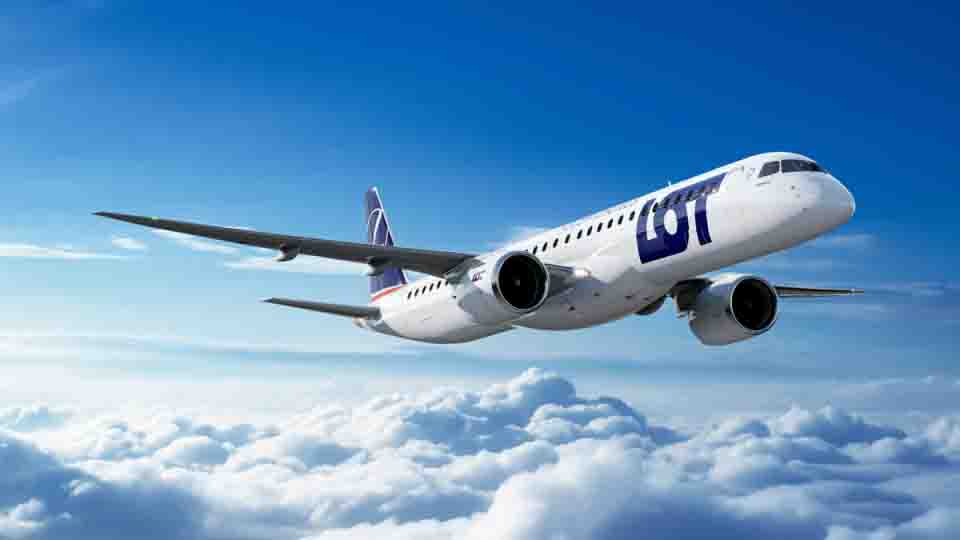
In order to improve operational flexibility and support network development, LOT Polish Airlines plans to add the Embraer E195-E2 to its fleet.
With the addition of the 25% more efficient E2 to their fleet, LOT will lease three new E195-E2 from Azorra, demonstrating their continued commitment to sustainable growth. This year, the first jet will arrive by the end of July, and all aircraft deliveries will be finished by October.
As the airline’s network expands, LOT needs a flexible solution to meet its capacity needs. In addition to providing passengers with an unparalleled flying experience without middle seats, the E2 enables LOT’s current E-Jet first generation flight crews to seamlessly transfer over a matter of days.
Additionally flexible, the new E2s match LOT’s larger narrow body aircraft with comparable seat prices. The airline plans to set up E195-E2, which can accommodate up to 146 passengers, in a cosy single class configuration with 136 seats.
The remarkable success of Embraer’s new aircraft family began with the 85-minute, 520-kilometer trip to Vienna; the 1800th E-Jet in the programme, an E190-E2, was just delivered to a customer in the Middle East.
LOT is one of the biggest E-jet operators in Europe with a fleet of 43 aircraft as of right now. Over 1.4 million flight hours, 850 million kilometres, and over 60 million passengers—nearly double Poland’s population—have been transported by LOT’s E-jet fleet to date.
Airlines
Qatar Airways Flight Encounters Severe Turbulence Over Somalia
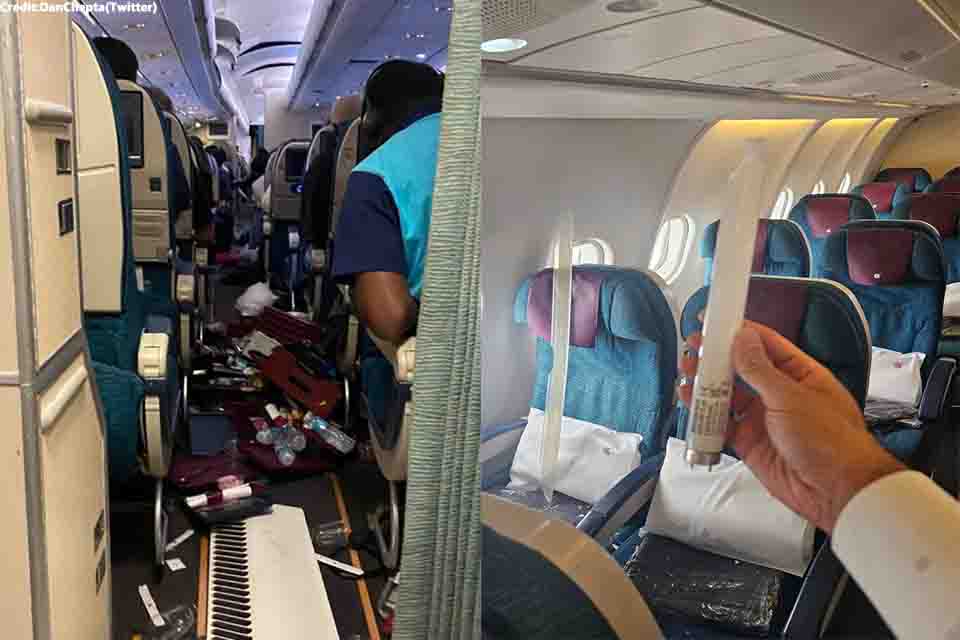
A routine flight from Doha to Mount Kilimanjaro turned harrowing for passengers aboard Qatar Airways Flight QR1499, as the aircraft encountered severe turbulence over Somalia due to adverse weather conditions.
The incident, which unfolded on Friday, left the aircraft, an Airbus A330-200 leased from Oman Air, with internal damages and passengers shaken.
An Airbus A330-200 (A4O-DA), which is presently leased from Oman Air, was used for the flight. The aircraft is still at Kilimanjaro International Airport, as per FlightAware, however the flight from Kilimanjaro International Airport (JRO) to Dar es Salaam (DAR) did not continue after the incident.
Images of the inside show damaged ceiling panels and lights, which are usually the consequence of turbulence causing passengers and service objects to fall into the ceiling.
Surprisingly, the Kenyan airports authority says that this never took place. I haven’t seen that reported online, even though they clearly deny the claim that the plane touched down in Nairobi.
According to flight tracking, the aircraft carried on to Dar es Salaam before returning to Doha later that day. It doesn’t seem like anyone was too seriously hurt in this incident, even though the cabin sustained significant damage.
The incident should serve as yet another timely reminder for passengers to always wear their seatbelts when sitting, even if the seat belt signs were activated at the time owing to the predicted adverse conditions in the area.
Airlines
Riyadh Air Initiates Talks with Airbus and Boeing for New order
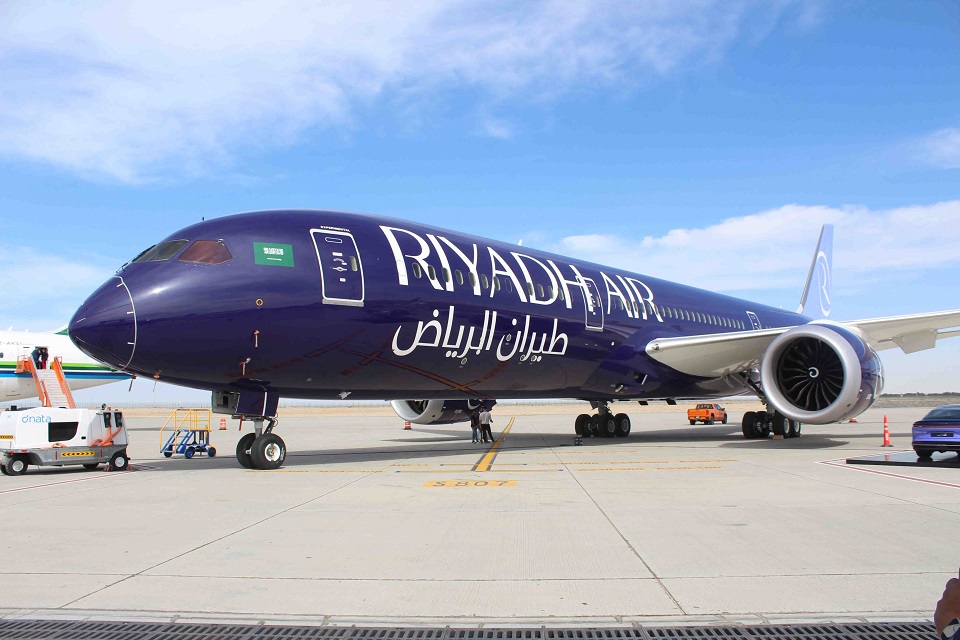
Riyadh Air, Saudi Arabia’s emerging second flag carrier, is poised for a significant expansion as it sets its sights on bolstering its fleet to commence operations by the summer of 2025.
Reports indicate that the airline is currently engaged in advanced discussions with aerospace giants Boeing and Airbus to finalize a substantial order of wide-body aircraft, marking a crucial step in its journey towards becoming a prominent player in the aviation industry.
CEO Tony Douglas revealed that Riyadh Air is on the verge of clinching a deal for additional narrow-body aircraft, with an announcement expected in the near future. This move underscores the airline’s strategic commitment to fortify its fleet capacity in preparation for an ambitious network expansion.
The imminent narrow-body order complements Riyadh Air’s recently completed acquisition of narrow-body jets, the details of which are set to be disclosed in the coming months. Riyadh Air’s expansion strategy aligns seamlessly with Saudi Arabia’s Vision 2030 initiative, aimed at revitalizing the nation’s aviation sector and fostering increased international tourism.
With plans to connect the capital city with over 100 destinations by the end of the decade, Riyadh Air envisions rapid growth, targeting a fleet of more than 200 aircraft within the initial five years of operation.
Notably, Riyadh Air’s endeavors come under the auspices of Saudi Arabia’s Public Investment Fund, signaling strong government support for the airline’s ambitions. However, amidst the backdrop of robust demand for aircraft and supply chain challenges plaguing both Airbus and Boeing.
Douglas emphasized the imperative of timely jet deliveries to ensure Riyadh Air’s successful debut in the competitive aviation landscape. Both Airbus and Boeing find themselves grappling with production constraints amid burgeoning demand, underscoring the urgency for Riyadh Air to secure its fleet on schedule.
As the airline prepares to take flight, these negotiations epitomize Riyadh Air’s determination to surmount industry challenges and carve out a prominent presence in the global aviation arena.

